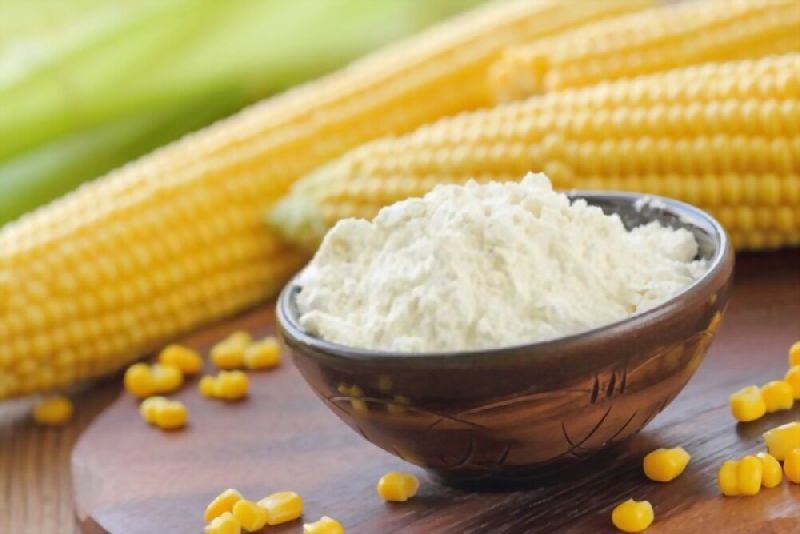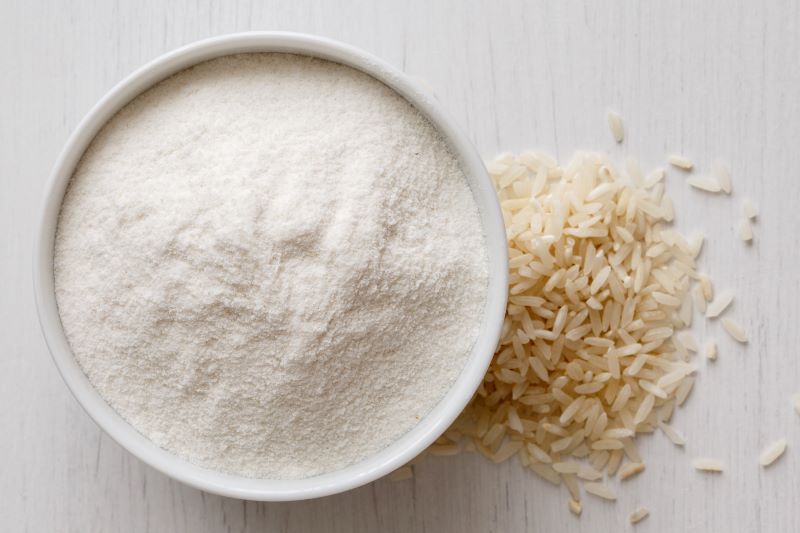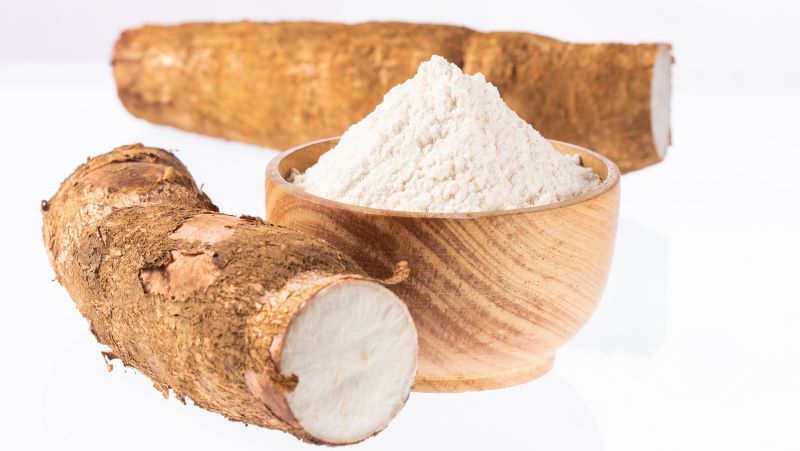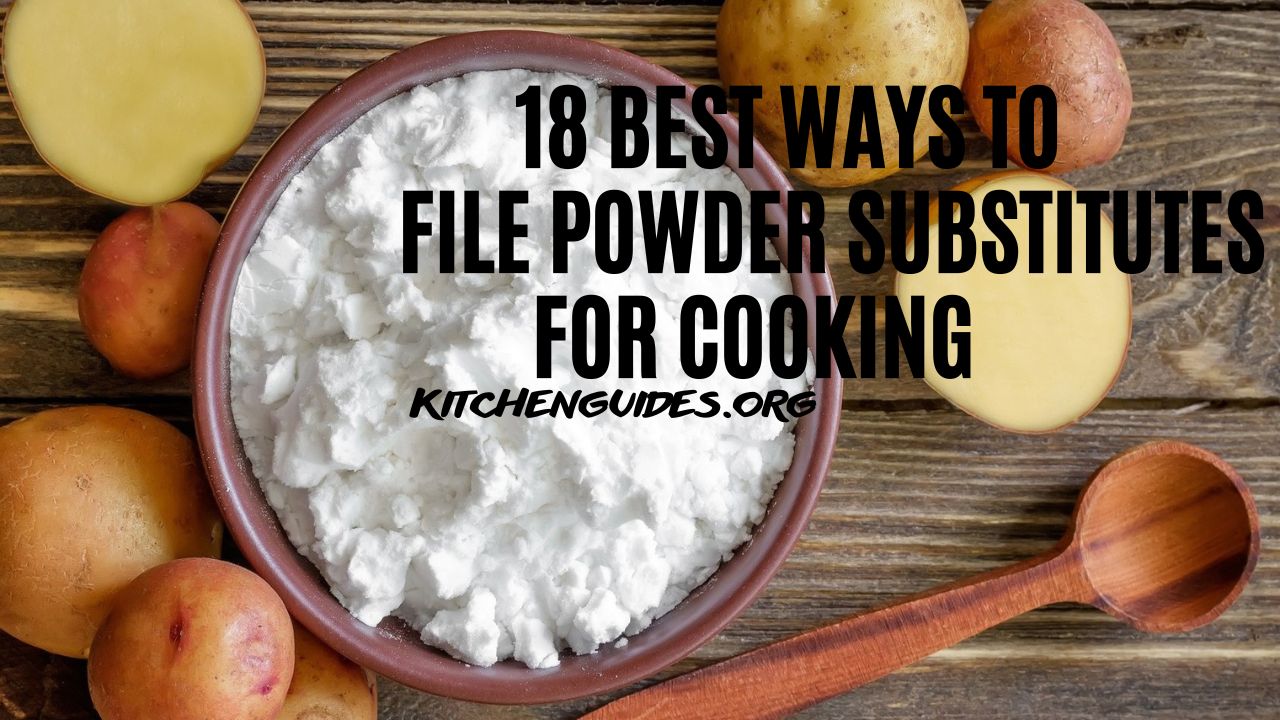Are you looking for the best ways to file powder substitutes for cooking? There are a lot of ingredients that people can use to bake their own cookies taste different. You want to choose something that will be efficient and easy to find in your local grocery store. If that sounds like you, then read on.
What Is File Powder?
File powder is the ground-up bark of the sassafras tree. It has been used as a seasoning for centuries and was first brought to Europe by European settlers.
The sassafras tree grows in Asia, Africa and the Americas. It produces a root that is used in cooking to add flavor to soups and stews. In many countries, including the United States, sassafras root is used to flavor tea.
The name comes from the French word “filet,” meaning a thin piece of meat or fish. The leaves are the source of another flavor-enhancing spice called filé gumbo filé powder, which is used to thicken soups and stews in Louisiana cuisine.
What Is File Powder Used For?
File powder is a traditional South American seasoning that can be used in a variety of ways. It is popular in Peruvian cuisine, and it is also known as huacatay, which is how it is spelled in Peru. The name comes from huacatay, which means “black mint” in Quechua, the language spoken by the Incas.
It is made from dried leaves and stems of Peruvian black mint (also known as purple mint or purple sage), which are ground into a powder. The flavor of file powder is pungent and slightly bitter with notes of peppermint and oregano. It has an aroma similar to thyme or rosemary.
Top 18 Best Ways to File Powder Substitutes For Healthy Cooking
1. Cornstarch

Cornstarch is a kind of powder that is made from the starch in corn and it is used as a thickener for sauces, gravies and pie fillings. It is also used in baking and many other recipes, so it is available in most grocery stores. Cornstarch can be used to thicken liquids without changing their flavor or adding any extra taste. The difference between cornstarch and other substitutes for flour like wheat flour or rice flour is that cornstarch has no gluten in it, which makes it safe for people who are allergic to gluten or have celiac disease.
2. Cornmeal
Cornmeal is a coarsely ground meal made from dried corn kernels. It can be used in baking as well as making polenta, which is a mushy porridge popular in Italy. To add flavor to your dishes, you can combine cornmeal with other ingredients such as cheese or herbs to create savory snacks like cornbread or calzones.
3. Potato starch
Potato starch is made by pressing raw potatoes through a sieve or pressing machines to extract the starch component of the potato. It is commonly used as a thickener for soups, sauces and gravies but can also be used as an ingredient in gluten-free baked goods like cakes and pastries.
4. Rice flour

Rice flour is very easy to find, and it works well as a powder substitute in most recipes. It has a light flavor, so it doesn’t mask the taste of the food you’re making. Rice flour has a tendency to clump up when added directly to cold water or other liquids. You may need to break these clumps up with your fingers or a fork before adding them to your dish.
5. Gum Arabic
Gum arabic is another common ingredient used as a powder substitute. It’s made from the sap of acacia trees and has been used for centuries as an ingredient in making candy, gum and other products that require syrup or gelling agents. Gum Arabic can be used as an alternative to cornstarch or arrowroot in recipes that call for powdered starches.
6. Tapioca starch
Tapioca starch comes from cassava root, which is a starchy vegetable that resembles a sweet potato when cooked. Tapioca starch has been used since ancient times in South America and Asia to thicken porridges and soups, but it’s also used in modern cooking as well.
7. Milk and Egg Whites
Milk and egg whites are both good options for replacing flour in a recipe. You can use regular milk or, if you’re feeling adventurous, try coconut milk or almond milk. You can also swap whole eggs for egg whites to cut down on calories.
8. Arrowroot Powder

Arrowroot powder is a great alternative to cornstarch and potato starch. It’s made from the root of the Maranta arundinacea plant and is used as a thickener in many recipes. It’s also gluten-free, making it an excellent choice for people who need to avoid gluten-containing ingredients in their food. If you don’t have arrowroot powder on hand but do have flour, try using this substitution: 1 tablespoon of flour plus 2 tablespoons of water equals 1 tablespoon of arrowroot powder.
9. Arrowroot Starch and Lemon Juice
Another option is to use arrowroot starch in place of flour (and vice versa). Arrowroot starch is made from a tropical plant called Maranta arundinacea (which also produces arrowroot powder). It provides similar results to cornstarch but has less flavor than cornstarch does when cooked with acidic ingredients like lemon juice or vinegar (or even tomatoes).
10. Oatmeal
Oatmeal is a great substitute for flour, especially if you need to thicken something up. You can use it in baking, as well as in a roux or gravy. You can even use it in place of cornstarch or potato starch to thicken liquid. Just add the oatmeal slowly and stir until you reach your desired consistency.
11. Bread crumbs

Bread crumbs are the most popular powder substitute, and they’re also the easiest to use. To make your own, lightly toast some stale bread, then pulse it in a food processor until it’s broken down into tiny crumbs. The dryness of bread helps absorb liquid in recipes such as soups, stews and casseroles.
12. Ground nuts or coconut
Ground nuts or coconut flakes can be used as substitutes for flour in baking applications. The nutty flavor adds a different taste to your dish, but it works well if you’re out of flour and want something on hand that’s almost as good. Ground nuts are also a great addition to meatloaves and meatballs because they add texture and nutrition without changing the flavor much at all. Nuts also make great coatings for fried foods such as chicken tenders or fish sticks!
13. Soy Flour and Egg Whites
Bread crumbs are an easy way to add a crispy coating to anything from meatballs to fish. You can make your own bread crumbs by drying out slices of bread in the oven, but it’s much easier just to buy them. You’ll find them in the baking aisle at most supermarkets. If you’re looking for something more flavorful, try crushed crackers or panko bread crumbs instead of regular bread crumbs.
14. Moringa or Drumstick Leaves Powder
Moringa powder is a great option to replace powdered sugar in your baking. It is also known as drumstick leaves powder and widely used in India. The powder is rich in vitamins and minerals, including Vitamin C and Vitamin A, which help promote healthy skin, hair and nails. It has a sweet taste with a nutty aroma. You can add this powder to cakes, cookies, muffins, pancakes and more!
15. Nigella Seeds or Kalonji Seeds Powder
Kalonji seeds are also known as black onion seeds or black cumin seeds. They contain minerals like iron, calcium, potassium and magnesium and have anti-inflammatory properties. These seeds can be eaten raw or cooked in curries and rice dishes.
16. Sesame Seeds Powder or Til Powder
The powder made by grinding sesame seeds is called til powder. It contains a high amount of calcium and protein and is used to make sweets such as til ladoos and til kheer.
17. Okra or Ladyfinger Seeds Powder (Bhindi Faliya)
Ladyfinger seeds are often used as a substitute for tamarind or amchur (dried mango powder). The green pods are boiled until tender and then dried to make this powder. It has an astringent taste and can be added to dishes like kadhi (yogurt curry), dal (lentil soup) or added to any dish to give it a sour taste.
18. Curds or Dahi
Curds or Dahi is another popular powder substitute for cooking. It contains proteins which are essential for body building and repairing of body tissues. It also contains calcium which helps in strengthening bones and teeth. Curds are rich sources of vitamin B12 that help in maintaining good memory power and concentration level. However, curds should be consumed in small quantities because excessive intake may cause stomach infection due to its acidic nature.
Conclusion
These alternatives can be used to replace the flour, cornstarch and potatoes in various recipes and cooking methods. There are several most commonly used substitutes that are available in supermarkets across the country. We have compiled this list of 18 best ways to file powder substitutes for cooking to help you find a healthier, budget-friendly alternative to traditional ingredients.
